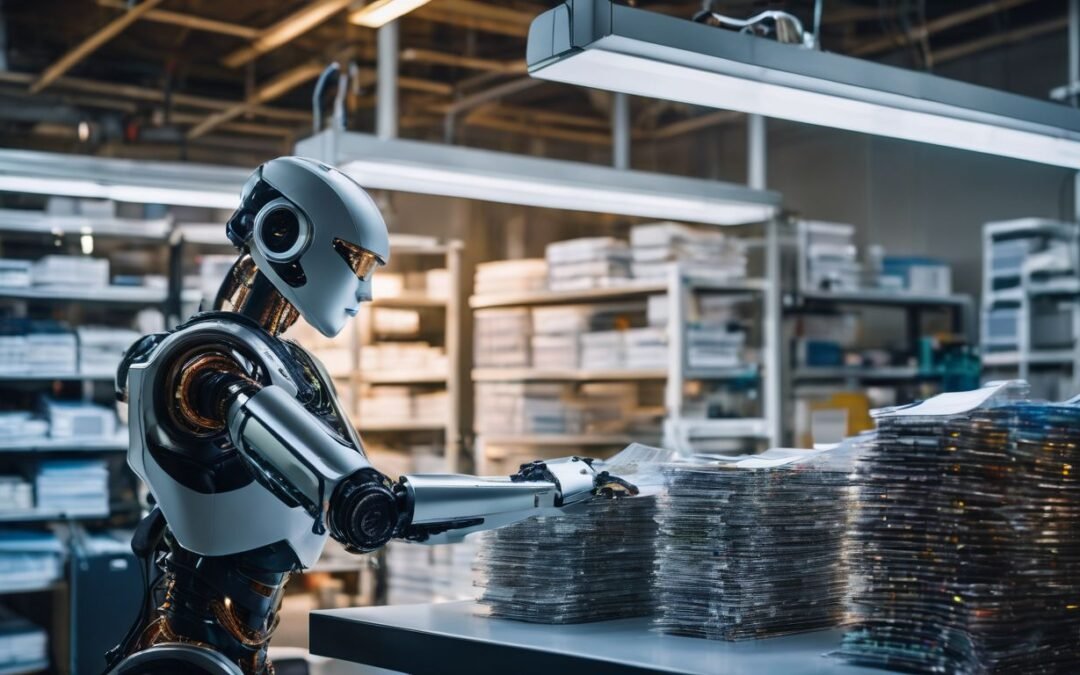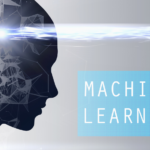Peering into the intricate tapestry of technology can sometimes feel like we’re piecing together a puzzle where each piece seems to shift and morph just as we think we’ve found its place.
Throughout my journey across the dynamic terrains of data science and artificial intelligence, I’ve witnessed terms like ‘data mining‘ and ‘machine learning‘ weave in and out of conversations about cutting-edge progress.
Though these concepts are often looped together, they stand as unique pillars with their own distinct purpose and use.
Let’s unpack these differences with clarity that cuts through the fog of techie lingo. Think of data mining as a sort of digital archaeology—it’s all about delving into vast data landscapes to discover hidden gems; patterns that lie beneath the surface waiting to be revealed.
Machine learning, on the other hand, is akin to coaching computers to make smarter choices by absorbing lessons from heaps of data over time.
Stay with me as we shed light on these topics—you’re not just gaining insight here; you’re unlocking a perspective that might just reshape your engagement with technological wonders at their most fundamental level.
Time to jump in!
Key Takeaways
- Data mining involves discovering patterns and insights from large datasets, while machine learning focuses on developing algorithms for computers to learn from data and make predictions or decisions without explicit programming.
- Both are essential for extracting valuable knowledge from data in different ways; with data mining being akin to a treasure hunt through data sets, and machine learning being more about training computers to recognize patterns independently.
- While human intervention is critical for guiding the process and interpreting results in data mining, integrating human intelligence with machine learning is vital to ensure accuracy and ethical decision-making.
- Understanding the distinctions between these technologies’ age, relationship, growth potential, and usage is crucial for anyone interested in AI technology.
Understanding Data Mining and Machine Learning

Data mining involves the process of discovering patterns, trends, and insights from large datasets to make informed decisions. On the other hand, machine learning focuses on developing algorithms that enable computers to learn from data and make predictions or decisions without being explicitly programmed.
Both are crucial for extracting valuable knowledge from data in different ways.
Definitions
Let’s get to know what data mining and machine learning mean. Imagine you have a big pile of rocks but hidden among them are precious gems. Data mining is like searching through that pile to find the shiny gems.
It uses special tools like databases, data warehouses, and computers to look for patterns in large sets of information. Think about it as a treasure hunt where you figure out interesting things from all the information you collect.
Machine learning is different—it’s more like teaching your dog new tricks. Instead of just looking for gems, you’re training your computer to recognize them on its own next time.
It uses algorithms which are fancy rules or instructions and gets better at making decisions or predictions the more it practices with data. It can be about teaching a computer how to suggest songs you might like or even help self-driving cars learn how to drive safely!
Purposes
Data mining lets us dig into big collections of data to find trends, patterns, and connections that might not be clear at first glance. Imagine you’re a detective looking through clues; that’s what it feels like with data mining.
You could discover how different things relate or predict what might happen next in areas like sales or customer behavior. It’s really handy for businesses that want to learn from their past and make smarter choices.
Machine learning is all about teaching computers to learn on their own. Like training a smart robot friend, we give machine learning algorithms examples and let them figure out the rules.
Then they can make decisions, recognize images or speech, even drive cars without our help! Machine learning helps with tasks where programming hard rules just isn’t enough—it adapts and improves over time, which is super cool for creating systems that get better the more they work.
Tools Used
I know that tools can make a huge difference in how we tackle jobs, especially in the world of AI and data. They help us dig through info or teach computers to learn by themselves. Let me tell you about some tools used in data mining and machine learning.
- For data mining, we use things like:
- Query tools, which let us ask questions of the data.
- Data visualization software to make charts and graphs. This makes it easy to see trends.
- Statistics programs that help find meaning in big piles of numbers.
- Cluster analysis tools group similar items so we can understand more about them.
- In machine learning, our toolkit looks a bit different:
- We’ve got neural networks that mimic how human brains work to spot patterns.
- Decision trees are like flowcharts that lead us to answers based on what we input.
- Ensemble learning combines multiple methods for better results.
- Deep learning programs go even deeper into teaching computers using lots of data.
Human Factor
In data mining, human intervention is essential to guide the process and interpret results. Human knowledge and expertise are crucial for understanding complex patterns and making informed decisions based on the findings.
Meanwhile, in machine learning, human errors and biases can influence the development of algorithms and models. Therefore, integrating human intelligence with machine learning is vital to ensure accuracy and ethical decision-making.
Understanding the role of humans in data mining and machine learning is key for anyone interested in AI technology. By recognizing the impact of human factors, we can harness the full potential of these technologies while addressing their limitations.
Differences Between Data Mining and Machine Learning

Data Mining and Machine Learning have distinct differences in terms of age, relationship, growth potential, and usage. The understanding of these disparities is crucial for anyone interested in AI technology.
Want to know more about these key differences? Keep reading!
Their Age
Data mining and machine learning have been around for a while now, with data mining coming into the scene in the 1990s and machine learning gaining popularity in the 2000s. This age of data mining and machine learning shows that they are mature and effective tools, essential in today’s data-driven world.
Over time, both have evolved and improved, with advancements in algorithms, technology, and applications contributing to their growth.
The age factor signifies not only maturity but also proven effectiveness in various industries. It shows how these technologies have stood the test of time and continue to be vital components of research, knowledge discovery, fraud detection, predictive analytics, automation processes, business intelligence systems among others.
Relationship
Data mining and machine learning have a close relationship. Data mining is like the first step, where we explore data to find patterns and insights. Then, machine learning takes it further by using those patterns to build predictive models automatically.
So, machine learning can be seen as an extension of data mining. It’s like taking what we learned from data mining and using it to make things like self-driving cars or fraud detection better.
In essence, think of data mining as finding hidden treasures in a cave, while machine learning is turning those treasures into something useful, like making predictions about the future based on what you found.
Growth Potential
Data mining and machine learning offer significant growth potential in the field of AI. Both play vital roles in uncovering hidden knowledge for decision-making processes, making them essential for the future of AI technology.
As the demand for data-driven insights continues to rise, professionals with expertise in data mining and machine learning will be highly sought after. With their applications expanding into various industries such as finance, healthcare, and marketing, mastering these technologies can open up a world of opportunities.
Machine learning stands out due to its ability to automatically learn and adapt to changes using techniques similar to those employed in data mining. This capability positions machine learning at the forefront of advancing AI technologies, making it an exciting area for anyone interested in shaping the future of artificial intelligence.
Usage
Data mining and machine learning have vast applications in the field of AI technology. Data mining is used to sift through large datasets, spotting patterns and trends that can aid in decision-making for businesses, such as detecting anomalies like credit card fraud.
On the other hand, machine learning programs are increasingly being applied in diverse areas ranging from self-driving cars to speech recognition. These programs utilize algorithms to learn from data and make predictions or decisions without being explicitly programmed to perform a specific task.
Both data mining and machine learning are essential tools in extracting valuable insights from complex datasets, aiding businesses in making informed decisions based on patterns discovered within their data.
Similarities Between Data Mining and Machine Learning
Both data mining and machine learning use algorithms to analyze and interpret large sets of data, allowing for the discovery of patterns or insights that can be used to make informed decisions.
Use of Algorithms
Data mining and machine learning both rely on algorithms to process data. Data mining uses predefined algorithms to uncover patterns or associations in the data, while machine learning takes it a step further by using these techniques to automatically learn and adapt as it processes new information.
Algorithms play a crucial role in both practices, allowing for the extraction of valuable insights from large sets of data. Understanding how algorithms are utilized in data mining and machine learning is key to unlocking their potential and harnessing their power for various applications within the field of artificial intelligence.
The use of algorithms forms the backbone of both data mining and machine learning, driving the discovery of patterns within datasets that might otherwise remain hidden. With an understanding of how these algorithms function, individuals can better navigate the complex landscape of AI technology, empowering them with tools essential for success in this ever-evolving field.
Utilization of Data
Data is the cornerstone of both data mining and machine learning. In data mining, we use historical data to uncover patterns and insights that can guide future decisions. On the other hand, in machine learning, we train computers using large sets of data so they can make predictions and decisions on their own.
The goal is to extract valuable information from the data for better decision-making, whether it’s improving business processes or enabling self-driving vehicles to navigate safely.
Both fields require accurate and clean data as input for successful analysis. Data preprocessing plays a crucial role in ensuring that the data used is suitable for analysis, reducing errors and ensuring reliable results.
How to Choose the Right Program
Consider your career goals and the specific skills you want to develop in the field of data and AI. Evaluate different programs based on their curriculum, faculty expertise, resources, and industry partnerships.
Consider your goals
When choosing between data mining and machine learning programs, it’s crucial to consider your career aspirations. If you are drawn to finding patterns in data and uncovering insights, then data mining may be the right path for you.
On the other hand, if building predictive models and advancing artificial intelligence excites you, then pursuing machine learning could be an ideal fit. Understanding your goals will guide your decision-making process as you navigate the world of AI technology and its future applications.
Your goals related to data extraction and predictive analysis should drive your choice between data mining and machine learning programs. By aligning your aspirations with the respective fields of study, you’re setting yourself on a focused trajectory toward a fulfilling career in this fast-growing domain.
Evaluate the programs
When choosing a program, consider your career goals in data and AI. Look at each program’s curriculum, faculty expertise, and industry partnerships. Analyze the availability of resources such as labs, internships, and research opportunities. Compare factors like cost, location, and alumni success to make an informed decision.
- Consider your career goals in data and AI.
- Look at each program’s curriculum, faculty expertise, and industry partnerships.
- Analyze the availability of resources such as labs, internships, and research opportunities.
- Compare factors like cost, location, and alumni success to make an informed decision.
Conclusion
Understanding the differences between data mining and machine learning is crucial for anyone interested in a career in data and AI. It is important to recognize that while both involve discovering patterns and making educated decisions based on data, they have distinct purposes and methods of operation.
By understanding these differences, individuals can make informed decisions about which program best aligns with their goals and aspirations in the field of artificial intelligence.




